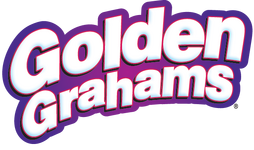Younger fans of Pikachu may be shocked to learn that the Pokémon Trading Card Game is now almost 20 years old, but it’s true: The card game debuted in the U.S. in 1998. As part of the release of the recent Sun & Moon expansion, General Mills is including special card packs in boxes of Lucky Charms, Honey Nut Cheerios, Cinnamon Toast Crunch, Golden Grahams, and Cocoa Puffs. Each pack contains two standard cards and one of four exclusive foil cards. If you’re someone who played Pokémon back in the late ’90s but hasn’t touched it in years, these packs are a great way to get reacquainted with the game, introduce it to the kids in your life and start collecting, battling and playing again.
But before you do, be sure to read this quick primer on some of the major ways the game has changed over the past two decades.
1. Trainer Card Subtypes
Trainer cards in the base versions of the Pokémon TCG served as item and support cards that assist Trainers in battle. Whether the items healed damage counters from Pokémon, allowed the player to discard their hand and search for cards, or remove status effects, Trainer cards were immensely useful and could help pull Trainers back from the brink of defeat. As the Pokémon TCG evolved, Trainer cards were divided into different subclasses that clearly defined their roles. This might make things look a bit more confusing, but the categorization has simplified the process of selecting what cards will make the biggest impact in your deck.
Currently, there are four main types of trainer cards:
- Item: These cards were the default Trainer cards when the game first launched. They provide healing and support effects, deck management cards, and serve a variety of uses.
- Stadium: Introduced in the Gym Heroes expansion, Stadium cards both players and the general rules of the game. They allow players to utilize Energy cards in a variety of unique methods, such as retrieving them from the discard pile or moving energy cards from a bench Pokémon to the active Pokémon.
- Pokémon Tool: Introduced in the Neo Genesis expansion, Pokémon Tools serve as cards that Pokémon can hold onto and equip. Items such as berries, various item shards, and Spirit Links fall into this category. Held items can provide healing and attack assistance when equipped to Pokémon.
- Supporter: Introduced in the Expedition Base Set, Supporter cards are extremely powerful Trainer cards that provide massive and unique effects. Because of their powerful nature, you can only play 1 Supporter card per turn
2. New Energy Types
Pokémon TCG fans from the ’90s will likely remember Energy cards. A necessary part of any deck, players attach one Energy card to a Pokémon per turn in order to gather power to perform different attacks and abilities. The base TCG included seven energy types: Fire, Water, Grass, Lightning, Psychic, Ground, and Colorless.
But with the introduction of new Pokémon types over the years have come new energy cards. Now there are also Darkness, Metal, Fairy, and Dragon Energy cards. More Energy cards equal more choices for deck types, which are always a welcome addition in a competitive card game.
3. Pokémon-EX and Pokémon-GX
A new Pokémon variant called Pokémon-EX and Pokémon-GX give Trainers powerful options to outfit their deck. These variations are unique Pokémon that possess considerably higher Hit Points and stronger attacks compared to their regular counterparts. Pokémon-EX were introduced in the Next Destinies expansion and Pokémon-GX were introduced in the recent Sun & Moon expansion. Unique to Pokémon-GX are GX Attacks, which are unique attacks that hit for a ton of damage.
Despite outclassing their normal counterparts, there are inherent risks to playing these cards. If a Pokémon-EX or –Pokémon-GX is defeated, the opponent draws two Prize Cards instead of one. And players are limited to four of the same Pokémon per deck, regardless of whether they are EX/GX variations or not. But these powerful Pokémon can turn the tide of battle in any deck, so including a few within your ranks can put a ton of pressure on your opponent.
4. BREAK Evolution
Pokémon evolution grew more complex after the introduction of the BREAKthrough Expansion. Pokémon BREAK is a special type of Evolution card that evolves from Basic, Stage 1, and Stage 2 Pokémon. BREAK Evolution provides an HP boost and additional attacks or abilities for Pokémon. The unique aspect of this type of evolution is the Pokémon retains attacks, abilities, weaknesses, resistances, and retreat cost from their previous evolution.
Essentially, this evolution provides more options to Trainers in battle. A major part of the Pokémon TCG is knowing the proper time to evolve your Pokémon to best match your opponent’s strategy. With the BREAK evolution, Pokémon can change their type mid-battle.
There is no limit to the number of BREAK cards you can have in your deck. However, it’s important to select the evolutions that align most with your strategy and Pokémon types.
Ready to jump back into the Pokémon Trading Card Game with your kids? Look for specially marked boxes of Lucky Charms, Honey Nut Cheerios, Cinnamon Toast Crunch, Golden Grahams and Cocoa Puffs at your grocery store.


